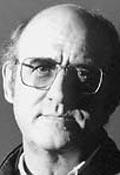Planning worship?
Check out our sister site, ZeteoSearch.org,
for 20+ additional resources related to your search.
- |
User Links
Search Results
[Como están los ojos de los esclavos]
Appears in 5 hymnals Composer and/or Arranger: Miguel Manzano, n. 1934 Tune Key: e minor or modal Incipit: 34555 55654 44444 Used With Text: A Ti Levanto Mis Ojos
[Como están los ojos de los esclavos]
A Ti Levanto Mis Ojos
Appears in 5 hymnals First Line: Como están los ojos de los esclavos Topics: Cuaresma Scripture: Psalm 123 Used With Tune: [Como están los ojos de los esclavos]
A Ti Levanto Mis Ojos
A Ti Levanto Mis Ojos
Appears in 1 hymnal Topics: Salmos Scripture: Psalm 123 Used With Tune: [A Ti levanto mis ojos]
A Ti Levanto Mis Ojos
A Ti Levanto Mis Ojos
Hymnal: Flor Y Canto (2nd ed.) #354 (2001) First Line: Como están los ojos de los esclavos Topics: Anhelo; Oración; Ritos de la Iglesia Reconciiación; Adviento; Cuaresma Domingos y Ferias Scripture: Psalm 123 Tune Title: [Como están los ojos de los esclavos]
A Ti Levanto Mis Ojos
A Ti Levanto Mis Ojos
Hymnal: Cantemos al Señor #141 (1986) First Line: Como están los ojos de los esclavos Refrain First Line: A tí levanto mis ojos Languages: Spanish Tune Title: [Como están los ojos de los esclavos]
A Ti Levanto Mis Ojos
A Ti Levanto Mis Ojos
Hymnal: Flor y Canto (3rd ed.) #309 (2011) First Line: Como están los ojos de los esclavos Topics: Cuaresma Scripture: Psalm 123 Languages: Spanish Tune Title: [Como están los ojos de los esclavos]
A Ti Levanto Mis Ojos
Miguel Manzano

b. 1934 Person Name: Miguel Manzano, n. 1934 Composer of "[Como están los ojos de los esclavos]" in Flor Y Canto (2nd ed.) Miguel Manzano is a Spanish composer and singer. He was born in Aillamor de Cardozo near the border with Portugal. Miguel began his religious musical career at the age of 8 as cantor at the Cathedral of Zamora, Spain. He studied solfeg, piano, organ and harmonium with the renowned teacher, Gaspar Arabaolaza. Later on, he began studies at the Higher School of Sacred Music in Madrid, where he studied Rhythm and Gregorian Modality, as well as Harmony and Religious Polyphony. He furthered his studies of language and musical rhythm at the Catholic Institute of Paris.
Miguel's internationally recognized music has been chosen to complete the repertoire of the National Liturgical Hymnal of the Espicopal Committee of Spanish Liturgy. At present he is Professor of Ethnic Music at the Higher Conservatory of Music in Salamanca.
--www.ocp.org/artists/1987
Miguel Manzano


 My Starred Hymns
My Starred Hymns


